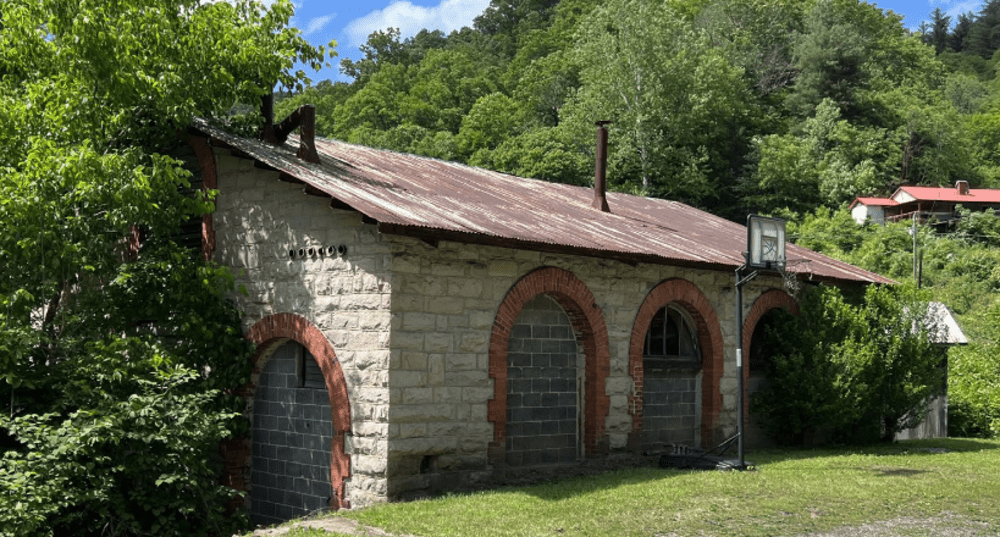Front Porch Blog
The Reclaiming Appalachia Coalition recently released its 2023 report, “National to Neighborhoods: Catalyzing Opportunities for Coal-Impacted Communities.” The report highlights the coalition’s current work and projects across the Appalachian coalfields of Virginia, West Virginia, Ohio and Kentucky.

The proposed Hotel McArthur Renovation in Vinton County, Ohio is just one of the projects highlighted in this year’s RAC report.
What is the Reclaiming Appalachia Coalition?
Before we dive into the details, you may be wondering just what the Reclaiming Appalachia Coalition is. Founded in 2016, RAC seeks to spur mine clean up projects throughout Central Appalachia that are responsive to community needs and interests and accelerate the growth of new, sustainable sectors. In other words, the purpose of the coalition is to help clean up, or reclaim, mine lands into innovative economic opportunities that directly benefit Appalachian communities and the environment.
RAC is led by Appalachian Voices, Coalfield Development in West Virginia, and Rural Action in Ohio, and technical assistance is provided by Downstream Strategies. Recently, RAC has joined the Central Appalachian Network as part of the Ecological Restoration Workgroup. Each organization works with communities and grassroots partners across the region to identify locations where reclaiming mine features could lead to positive economic impacts for surrounding communities.
Over the past five and a half years, the coalition’s partnerships have helped secure more than $40 million in funding for innovative projects throughout Central Appalachian communities. That’s real money flowing into our communities as the greater Appalachian region seeks to transition away from an extractive coal- and fossil fuel-based economy into a more diverse, more environmentally friendly economic future through the principles of just transition.
Just transition — what’s that?
So just what is just transition and why is it important? In recent years, the Appalachian region has been working to gradually move its economy away from coal and fossil fuels toward an economy that improves the livelihoods of the working folks who call the region home while also guarding and preserving the natural environment. While extractive industries like coal mining have been the backbone of the Appalachian economy for decades, current efforts to diversify the region’s economy are turning the tide. With both the national and global economy shifting toward lower-carbon emissions, many long standing jobs that Appalachian workers and their families have traditionally relied on are in danger of being lost. This has created a great deal of tension between the concern for working people’s ability to provide for their families and legitimate concern for the wellbeing of the land, air and water.
Taking both of these concerns into account, just transition holds that the workers and communities who gave the most in the carbon-intensive economies of the past are also the very same folks who have the most at stake as we shift to a greener economy. Therefore, those same people and communities should be among the first to benefit from the new clean energy framework of the 21st century.
That being said, it’s important to understand that just transition won’t happen without targeted efforts that address the issues our communities face at a structural level. The Reclaiming Appalachian Coalition has been working to fulfill the promise of these efforts one project at a time, helping to prove that just transition isn’t just a lofty dream — it actually works! The coalition’s latest report features projects that successfully enacted this shift toward a brighter (and cleaner) economic future at the local level through a process of innovative mine reclamation.
Innovative reclamation/economic benefits
Each RAC project is a partnership with a local community. Past mine reclamation efforts have left many projects abandoned and without a long-term purpose, but what sets RAC’s projects apart is that these projects are directly aimed toward addressing the needs of the communities, with direct input from the folks who live in those communities. These proposed projects are also geared toward providing long-term economic benefits, and they all address legacy environmental issues.
RAC calls this set of principles Innovative Reclamation, which can be summed up in six core principles. Innovative Reclamation projects:
- Go above and beyond the legal requirements for reclaimed abandoned mine lands to develop projects that support sustainable development, native ecosystem restoration or both;
- Are developed to be place-appropriate;
- Are inclusive of many community members, especially those who have often been “left out” of the decision-making process;
- Are environmentally friendly;
- Are financially viable;
- Introduce new concepts to the region that could potentially be replicated on similar project sites.
Funding from several sources — including the Infrastructure Investment and Jobs Act, better known as the bipartisan infrastructure law, signed by President Biden in 2021 — have helped pave the way for several successful projects in Ohio, Virginia and West Virginia, with real economic impacts.

In fact, a 2022 economic impact assessment of the Abandoned Mine Land Economic Revitalization Program found that the $410 million allocated to the states of Kentucky, Ohio, Virginia and West Virginia has resulted in a local economic impact of approximately $715 million and has created 4,412 full- and part-time jobs to date. The full economic potential of the allocated funding has not yet been fully realized since, as of the end of 2021, only $109 million of the $410 million has been spent.
New Projects
RAC is securing funding for over a dozen diverse projects across five Appalachian states. For instance, the Dante Steam Building Restoration Project in Dante, Virginia, will transform a long-shuttered power plant into a state-of-the-art workforce development center, while the Three Rivers Destination Center in nearby Saint Paul will serve as the central hub of Southwest Virginia’s rapidly growing outdoor recreation and tourism economy while tying together main-street business, entrepreneurship and environmental education.
Meanwhile, in Ohio, the Vinton County Tourism Enhancement Project will restore an 1839 hotel to its former glory with the added benefit of a visitors’ center and modern amenities. And in West Virginia, the Appalachian Climate Technologies Coalition will receive $62.8 million from the Biden administration’s Build Back Better Regional Communities Challenge to spur job growth in 21 economically distressed and coal-impacted counties in southern West Virginia. Other projects and proposals include campgrounds, nature trails, carbon removal initiatives, mini-grants for parks and even a motorsports venue!

The Dante Steam Building in Virginia will be transformed into a workforce development center.
To read all the details about the exciting projects that are helping to reshape the Appalachian economy, you can read the full report. You can also check out the recent webinar for more information about the projects and the RAC itself.
PREVIOUS
NEXT
Related News

Leave a comment
Your email address will not be published. Required fields are marked *
